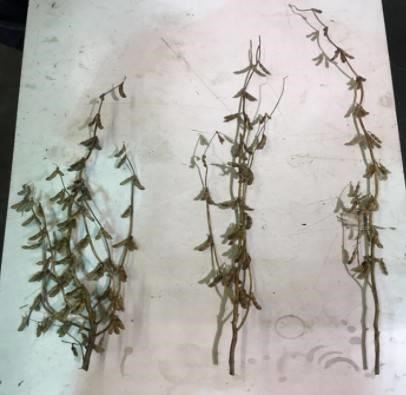By Laura Lindsey and Alexander Lindsey
Imbibitional chilling may occur in corn and soybean seeds if the soil temperature is below 50°F when the seed imbibes (when seed rapidly takes up water from the soil, usually within 24 hours after planting). Imbibitional chilling can cause reductions in stand and seedling vigor. If seeds were planted into soil at least 50°F (and have already imbibed), the drop in temperature is not likely a problem if the plants have not yet emerged from the soil. This year, the concern is for seed planted into dry soil that imbibed due to the recent snow melt.
If your corn and soybean plants were emerged at the time of the cold temperatures last week, fields should be assessed this week as the temperature warms up. The growing point of corn is below the soil surface until the V6 growth stage, and therefore is protected from low temperatures to some extent. For soybean, the growing point is above the ground when the cotyledons are above the soil surface. If damage occurs below the cotyledons, the plant will die.

Figure 1. Soybean plants seeded at 100,000, 140,000, and 180,000 plants per acre.
If your corn and soybean plants were not yet emerged at the time of the cold temperatures last week, you may need to wait longer to assess potential damage. Checking the seeds now may be hard to tell if imbibitional chilling occurred because affected seeds that won’t complete the germination process will still absorb water. As the temperatures warm up, corn and soybean seeds should begin to germinate and emerge from the soil. We suggest assessing corn and soybean stand as plants emerge.
For soybeans planted in April or May, a stand as low as 100,000 plants per acre can still produce maximum yield. However, we do not recommend replanting until the soybean stand is less than 50,000 plants per acre. At low plant populations, soybean plants can compensate through increased branching (Figure 1). In our research, going from 100,000 plants per acre to 50,000 plants per acre resulted in a 9 to 14% reduction in yield.
Final stands for corn should be between 24,000 and 26,000 plants per acre in lower yielding environments to optimize yield, though some higher yielding environments maximize yield at stands that exceed 34,000 plants per acre. Early planting dates with lower stands can still produce exceptional yield. For example, in past research, a stand of 20,000 plants per acre planted on April 20 yielded 90% of the optimum. If stands are 15,000 plants per acre or fewer, a replant may be warranted as the yield gained from a higher seeding rate planted in early to mid-May can exceed the yield from corn with a low stand planted in mid-April.
Source : osu.edu